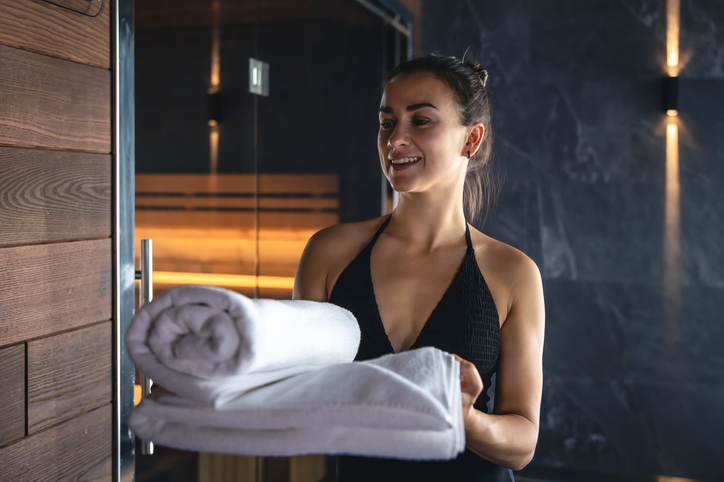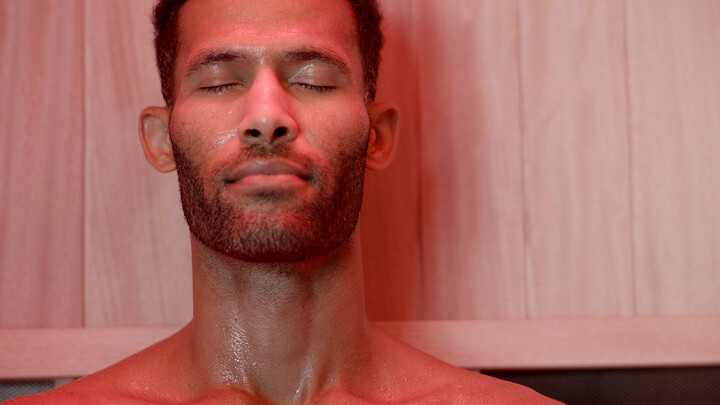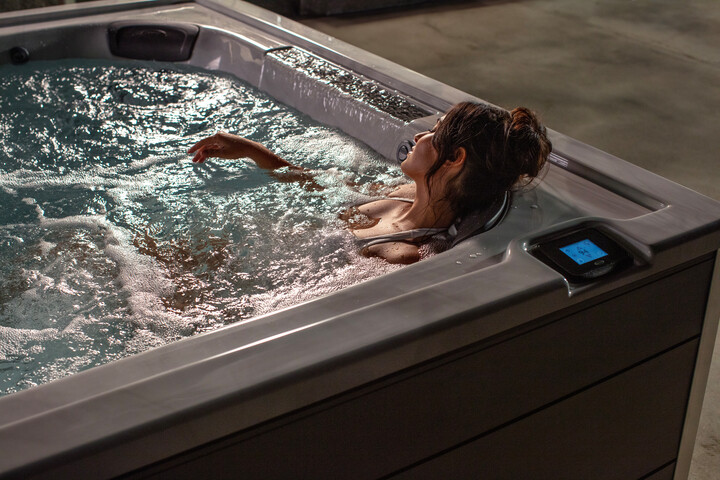Picture this: You’ve had a long, stressful day, and all you want to do is relax and unwind. What better way to do that than by stepping into your sauna?
Saunas have been cherished for centuries as spaces of tranquillity and rejuvenation, providing numerous health benefits. But using a sauna as a beginner isn’t as simple as just walking in and sitting down.
Sure, you’ll be working up a sweat and enjoying the cozy warmth, but you may run into some concerning issues without knowing how to use a sauna properly.
There are certain guidelines to follow when you first begin using a sauna and expert tips that can enhance the experience, ensuring that you get the most out of your time in these sweat-inducing spaces.
So, if you’re ready to take your sauna sessions to the next level, keep reading to learn some valuable insights. Trust us when we say that you’ll never want to step out once you discover the power of using a sauna properly!

Preparing for a Successful Sauna Session
Proper preparation is key to maximizing the benefits of your sauna experience while ensuring safety and comfort. Here are some essential tips to get you started:
Hydration: Importance of Drinking Water Before Entering
Before stepping into the sauna, it’s crucial to hydrate. The high temperatures can lead to sweating, and without adequate pre-session hydration, you risk dehydration.
Drinking at least one to two glasses of water will help maintain your body’s hydration levels throughout the session.
Remember, hydration is about preparing for the sauna and replenishing fluids after your session to replace what you’ve lost through sweating.
What to Wear: Recommendations for Comfortable Attire
Choosing the right attire can significantly enhance your sauna experience. Opt for loose, breathable fabrics that allow your skin to breathe and sweat to evaporate.
Many prefer to use the sauna in their swimsuits or simply wrap themselves in a towel. The key is to wear something that you feel comfortable in, and that won’t inhibit the natural sweating process or become uncomfortably hot.
Additionally, consider going barefoot or wearing flip-flops to protect your feet from the hot floor while maintaining hygiene.
Timing: Best Times of Day for Sauna Use
The best time for a sauna session is mainly personal and can depend on your daily routine and how your body reacts to the sauna.
Many find that a morning sauna helps wake the body, providing an energetic start to the day.
Others prefer the evening for its relaxing effects, promoting better sleep. If you’re incorporating a sauna session into your fitness routine, using the sauna after your workout can help with muscle relaxation and recovery.
Experiment with different times to find what best suits your lifestyle and body’s response.

How to Use a Sauna – Your Step-by-Step Guide
Embarking on the journey of sauna use not only enhances relaxation but also contributes significantly to your overall well-being.
This step-by-step guide is designed to help beginners navigate the sauna experience safely, ensuring maximum benefit and enjoyment from each session.
Setting The Temperature
Finding the right temperature is a crucial aspect of creating the ideal sauna experience. Traditional saunas typically operate between 150°F and 195°F (65°C to 90°C), with the optimal temperature varying based on personal preference and tolerance.
For those new to sauna use, starting at the lower end of this spectrum is advisable, allowing your body to adapt to the heat gradually.
Adjusting the temperature should be done gradually and always with consideration for your comfort and health.
When using an infrared sauna, the temperature range is generally lower, usually between 120°F to 150°F (49°C to 65°C), as the infrared heaters directly warm the body rather than the air.
This direct heating method allows for a more comfortable experience at lower temperatures while still providing profound health benefits such as improved circulation and muscle relaxation.
Entering the Sauna
The intense heat can shock the system when you first enter the sauna. It’s essential to give your body time to adjust, especially as a beginner.
If your sauna has multiple levels, start by sitting on a lower bench if available. Because heat rises, the temperature will be lower at this level, giving your body time to acclimate.
After a few minutes, you can move to a higher seat if you prefer a hotter environment.
However, if your sauna only has one level, step into it while the temperature climbs to its set point, gently warming your body alongside the sauna’s interior.
Duration and Frequency
Recommended Length of Time for Beginners:
If you’re new to sauna use, start with shorter sessions of about 5 to 10 minutes. As you become more accustomed to the heat, you can gradually increase the duration up to 15 to 20 minutes.
Listening to your body is critical; if you feel uncomfortable or too hot, it’s time to exit the sauna.
How Often You Should Use the Sauna for Health Benefits:
Regular sauna use can improve cardiovascular health, relaxation, and detoxification.
Starting with 2 to 3 sessions per week is beneficial, and you can adjust based on how your body responds.
Consistency is more important than frequency, so find a rhythm that fits into your lifestyle and stick with it.

Post-Sauna Care for Optimal Results
After enjoying a rejuvenating sauna session, paying attention to post-sauna care is important to maximize the benefits and facilitate your body’s recovery process.
Here are some expert tips to ensure you get the most out of your sauna experience:
Cooling down:
Just as warming up before exercise is essential, gradually cooling down after a sauna session is equally important.
This helps your body adjust to the temperature change and reduces the risk of feeling lightheaded or dizzy. Here’s how you can effectively cool down post-sauna:
- Step outside the sauna and find a cool area or a room with lower temperatures.
- Use a damp towel or cloth on your forehead or neck to help cool down your body.
Hydrating and replenishing:
Saunas promote sweating, which means losing water and electrolytes during a session.
It’s crucial to rehydrate your body to avoid dehydration and restore vital electrolyte balance. Here’s what you should do:
- Drink plenty of water immediately after leaving the sauna to replenish lost fluids.
- Add electrolyte-rich drinks like coconut water or sports drinks to your post-sauna hydration routine.
- Be mindful of beverages containing alcohol or caffeine, as these can dehydrate your body further.
Rest and relax:
After a sauna session, giving your body time to rest and recover is important.
Allow your muscles to relax and enjoy the therapeutic effects of the sauna. Practice these post-sauna relaxation techniques:
- Find a calm and quiet space where you can rest comfortably.
- Lie down or sit comfortably and focus on deep breathing exercises, allowing the tension to leave your body.
- Incorporate other relaxation techniques, such as meditation or gentle stretches, to enhance the rejuvenating effects of the sauna.
Remember, post-sauna care is an integral part of the overall sauna experience and can greatly contribute to your well-being.
By taking these steps to cool down, hydrate, and relax afterward, you can reap the full benefits of each session and promote a healthy recovery process for your body.
Sauna Safety Tips and Considerations
Saunas may be relaxing and immensely beneficial for most individuals, but it’s important to prioritize safety.
Here are some essential sauna safety tips and pointers to ensure a worry-free and enjoyable sauna experience:
Listen to your body
When using a sauna, paying attention to your body’s signals is crucial. High temperatures can stress the cardiovascular system, so if you begin to feel lightheaded, dizzy, or experience discomfort, it’s important to exit the sauna immediately and cool down.
Be mindful of the following signs indicating overheating or discomfort:
- Dizziness or lightheadedness
- Rapid or irregular heartbeat
- Difficulty breathing
- Nausea or vomiting
- Excessive sweating
If you have any pre-existing health conditions or concerns, it’s always wise to consult with a healthcare professional before incorporating saunas into your routine.
Unlocking the Power of Proper Sauna Use with Wellness Shop
Knowing how to use a sauna, from preparing for your session to setting the ideal temperature, is crucial in maximizing the health and relaxation benefits it offers.
Whether you’re a seasoned sauna enthusiast or a newcomer eager to embark on this wellness journey, the key lies in listening to your body and making adjustments to suit your personal comfort and safety.
For those looking to elevate their sauna experience further, investing in a premium infrared sauna could be the next step.
Visit your nearest Wellness Shop today to explore our selection of high-quality infrared saunas designed to fit your lifestyle and wellness goals.
Embrace the warmth and wellness a sauna can bring by choosing the right equipment with Wellness Shop.




